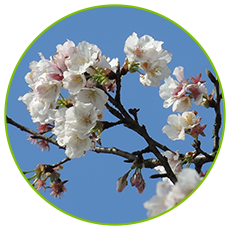Nov . 18, 2024 16:02 Back to list
Enhancing Orchard Yield through the Benefits of Pear Pollen Utilization
Enhancing Orchard Yield The Role of High-Quality Pear Pollen
In the world of agriculture, the quest for higher yields and more resilient crops is a perpetual challenge for farmers and researchers alike. One particularly promising avenue for improving fruit production is the use of high-quality pear pollen. This natural resource, often overlooked, holds significant potential for increasing orchard yields, particularly in pear cultivation. Understanding the benefits of this pollen, its application in pollination, and its role in enhancing fruit quality can provide orchardists with a valuable tool for maximizing their harvests.
The Science Behind Pear Pollen
Pear pollen, produced by the male flowers of the pear tree, contains a wealth of genetic materials essential for reproduction. Each pollen grain serves as a carrier of genetic information, crucial for fertilizing the ovule of the female flower. High-quality pollen is characterized by its viability and ability to germinate successfully, which directly correlates to the fertilization success rate and fruit set.
Research indicates that high-quality pear pollen can significantly improve the pollination process. When trees receive pollen from compatible and robust sources, the fertilization efficiency increases, leading to better fruit development. The right varietal combination is critical; some pear varieties are self-pollinating, but many require cross-pollination to achieve optimal yields. Thus, the strategic use of high-quality pollen can be a game-changer for orchard productivity.
Enhancing Orchard Yield
Incorporating high-quality pear pollen into orchard management practices can lead to a noticeable increase in yields. Studies have shown that trees pollinated with high-quality pollen produce larger fruits and more numerous fruit sets. This phenomenon can be attributed to several factors
1. Increased Fertilization Rates High-quality pollen germinates more effectively, leading to higher fertilization rates. This results in a more substantial and uniform fruit set, which is particularly important for commercial orchards that depend on consistent yield for economic viability.
2. Improved Fruit Quality The genetic diversity brought by high-quality pollen can enhance the quality of the fruit. Pears produced under these conditions often exhibit better sugar content, texture, and overall flavor, making them more appealing to consumers and thus more marketable.
high quality using pear pollen can improve orchard yield

3. Greater Resistance to Disease and Stress The genetic robustness of high-quality pollen can lead to stronger tree growth and greater resistance to diseases and environmental stresses. Healthier trees can withstand adverse conditions better, contributing to more reliable yields over time.
Practical Application in Orchards
To take advantage of the benefits of high-quality pear pollen, orchardists should consider the following practices
- Selecting Compatible Varieties Identifying compatible pear varieties for cross-pollination is crucial. Growers can collaborate with local agricultural extension services or research institutions to determine the best pollen sources for their specific conditions.
- Timing Pollination Understanding the flowering periods of different varieties can aid in effectively timing pollen application. Orchardists can optimize the use of high-quality pollen by ensuring it coincides with the female flowers’ receptiveness.
- Utilizing Pollination Techniques Employing techniques like artificial pollination can enhance the effectiveness of high-quality pollen. This approach can be particularly beneficial in large orchards where natural pollinators, such as bees, may not be sufficient.
Conclusion
The use of high-quality pear pollen presents a viable strategy for enhancing orchard yields. By understanding its role in the pollination process and implementing management practices focused on leveraging this resource, orchardists can significantly improve their fruit production. As the demand for quality fruit continues to grow, investing in high-quality pollen could become a vital part of leading-edge agricultural practices, ensuring that pear orchards thrive in a competitive market. Embracing this innovative approach could not only increase yields but also contribute to the sustainability and resilience of fruit production systems worldwide.
-
Premium Pollen Producer & Apricot Pollen Suppliers High-Quality Apricot Pollen Factories
NewsJul.07,2025
-
Premium Juniper Tree Pollen for Fruit Tree Varieties – Quality Assured by Leading Plum Pollen Manufacturers
NewsJul.07,2025
-
High Quality Elm Pollen Supplier - Fresh Elm Tree & Apricot Flower Pollen for Sale
NewsJul.07,2025
-
Premium Cherry Pollen for Sale – Fresh Cherry & Avocado Tree Pollen Supplier
NewsJul.06,2025
-
Premium Apricot Pollen - High-Quality Pollen Collected from Apricot Flowers Factories, Manufacturers & Suppliers
NewsJul.06,2025
-
Function of Cross Pollination Enhance Yield with Leading Factories, Manufacturers & Suppliers
NewsJul.06,2025